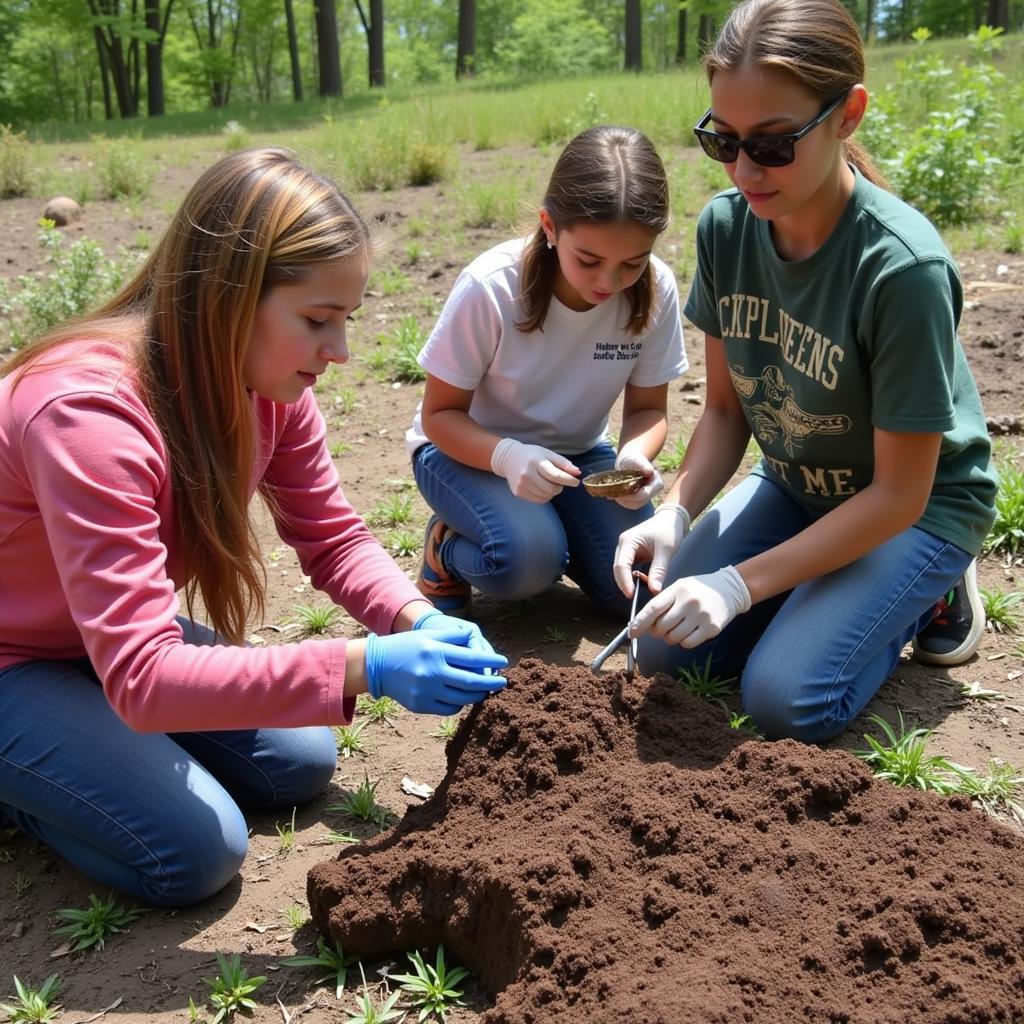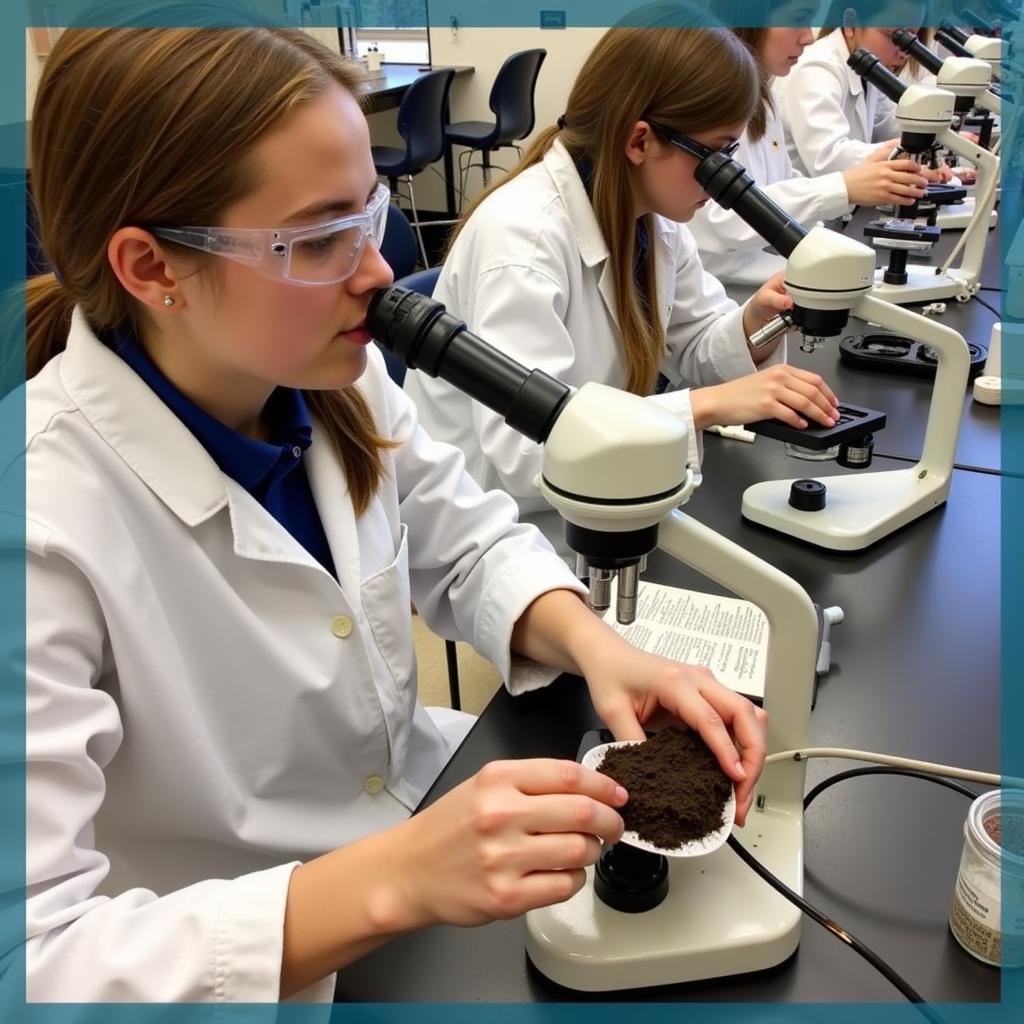Tiny Earth is a revolutionary approach to antibiotic discovery, harnessing the power of studentsourcing to uncover potential new antibiotics from soil samples. This innovative program engages students in hands-on research, empowering them to contribute to the fight against antibiotic resistance.
What is Tiny Earth? A Global Initiative for Antibiotic Discovery
Tiny Earth connects students with cutting-edge research in the fight against antibiotic resistance. It’s a globally recognized program that provides students with the opportunity to discover novel antibiotics from soil bacteria. Through hands-on experimentation, students isolate and identify microorganisms with antibiotic properties, contributing valuable data to a global database. This student-driven research not only advances scientific knowledge but also inspires the next generation of scientists. The program emphasizes the importance of scientific discovery and its potential impact on global health.
How Tiny Earth Works: From Soil to Science
The Tiny Earth process is straightforward yet impactful. Students collect soil samples from diverse environments, from their backyards to local parks. These samples are then brought back to the lab where they are diluted and plated onto agar, a nutrient-rich substance that encourages bacterial growth. As bacteria grow, they form colonies that are then screened for antibiotic activity. This screening involves testing the bacteria against safe relatives of known pathogens. If a bacterial colony shows promise, further testing and analysis are conducted to determine the specific antibiotic compound produced.
 Students Collecting Soil Samples for Tiny Earth Project
Students Collecting Soil Samples for Tiny Earth Project
The Importance of Student Involvement in Antibiotic Research
Engaging students in this kind of research is crucial for several reasons. First, it provides them with valuable hands-on experience in a real-world scientific setting. Second, it fosters a deeper understanding of the scientific process, from hypothesis generation to data analysis. And finally, it inspires a new generation of scientists to pursue careers in STEM fields, particularly in antibiotic research. The program highlights the critical need for new antibiotics and empowers students to be part of the solution.
Tiny Earth’s Impact: Contributing to the Fight Against Antibiotic Resistance
The Tiny Earth initiative has already made significant strides in the search for new antibiotics. The global database of antibiotic-producing bacteria is constantly expanding, providing researchers with a valuable resource for identifying potential drug candidates. Moreover, the program has fostered a global network of students and educators dedicated to addressing the growing threat of antibiotic resistance.
 Students Analyzing Soil Samples in a Lab Setting
Students Analyzing Soil Samples in a Lab Setting
“The Tiny Earth program is an excellent example of how citizen science can contribute to vital research,” says Dr. Sarah Jones, a microbiologist at the University of California, Berkeley. “By empowering students to participate in antibiotic discovery, we are not only expanding our knowledge base but also inspiring the next generation of scientists.”
Why is Discovering New Antibiotics Important?
The emergence of antibiotic-resistant bacteria is a serious threat to global health. Existing antibiotics are becoming less effective, leading to infections that are difficult, and sometimes impossible, to treat. The Tiny Earth project plays a vital role in addressing this challenge by exploring new sources of antibiotics and engaging students in this crucial research.
Tiny Earth Resources and Support
The Tiny Earth network provides a wealth of resources and support for educators and students, including detailed protocols, training materials, and online forums. This ensures that anyone interested in participating in the program has access to the necessary tools and guidance.
“The support provided by the Tiny Earth network is invaluable,” comments Dr. David Lee, a high school science teacher. “It makes it easy to integrate this cutting-edge research into my classroom and provide my students with a truly enriching experience.”
Conclusion: Tiny Earth – A Powerful Tool for Antibiotic Discovery
Tiny Earth is not just a research project; it’s a global movement empowering students to make a real difference in the fight against antibiotic resistance. Through this innovative studentsourcing approach, Tiny Earth is uncovering new antibiotics and inspiring the next generation of scientists. This collaborative effort holds immense promise for addressing one of the most pressing health challenges of our time.
FAQ
- What is the goal of Tiny Earth? To discover new antibiotics from soil bacteria.
- Who can participate in Tiny Earth? Students and educators at various levels.
- Where do students collect soil samples? From diverse environments, including their backyards and local parks.
- How are potential antibiotics identified? By testing bacterial colonies against safe relatives of known pathogens.
- Why is antibiotic discovery important? To combat the growing threat of antibiotic resistance.
- What resources are available for Tiny Earth participants? Detailed protocols, training materials, and online forums.
- How can I get involved in Tiny Earth? Visit the Tiny Earth website for more information.
Common Scenarios
- Scenario 1: A student finds a bacterial colony that shows promising antibiotic activity. What should they do next? They should document their findings and follow the established protocols for further testing and analysis.
- Scenario 2: A teacher wants to implement Tiny Earth in their classroom. How can they get started? They can access the resources and training materials available on the Tiny Earth website.
Further Exploration
Explore other resources on our website about antibiotic resistance and the importance of scientific research.
Need Support? Contact us: Phone: 0904826292, Email: research@gmail.com or visit us at No. 31, Alley 142/7, P. Phú Viên, Bồ Đề, Long Biên, Hà Nội, Việt Nam. We have a 24/7 customer support team.